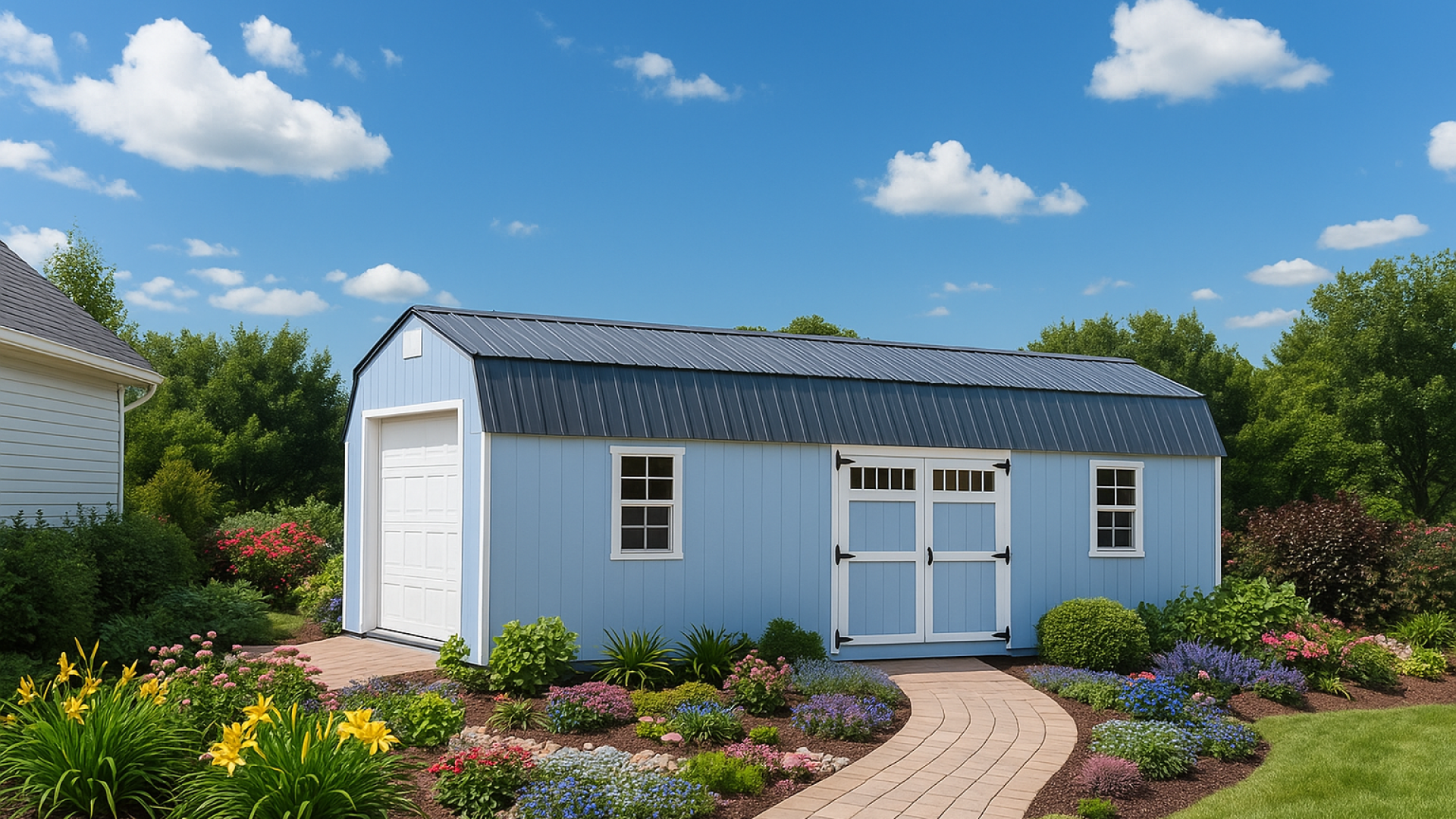Rent-to-Own Sheds: Weighing the Pros and Cons of Rent-to-Own Sheds
If you're staring at a clutter-filled garage or paying a monthly fee for a self-storage unit, a new backyard shed probably sounds like the perfect solution. But if you don't have thousands in cash lying around, you're likely considering a Rent-to-Own (RTO) shed program.
RTO is a popular way to get a high quality shed with minimal upfront cost and no credit check. However, it’s not a one-size-fits-all solution. To help you make the right choice, we've broken down exactly how Rent-to-Own sheds work, their major advantages and drawbacks, and the essential questions to ask before you sign on the dotted line.
What is Rent-to-Own?
A Rent-to-Own agreement is essentially a lease agreement with an option to purchase. It is not a traditional loan or financing.
- How it Works: You pay a fixed monthly "rental fee" for a specified term (typically 24 to 60 months). A portion of each payment goes toward the rental fee, and the remainder is applied toward the shed's original cash price.
- Ownership: The shed remains the property of the RTO company until you make the final payment. Once all payments are complete, ownership is transferred to you. There is no penalty for early pay off.
- Flexibility: If your situation changes and you no longer need the shed, you can usually terminate the contract and have the company retrieve the building, with no debt or impact on your credit.
- No penalty for early payoff: Paying more than the minimum amount helps you reduce your balance faster and lowers the total rental fees over the term.
The Pros: Why RTO Sheds Are So Appealing
The convenience of Rent-to-Own is undeniable, especially if you need a solution quickly.
The Cons: The Hidden Costs You Must Consider
While RTO offers great flexibility, that convenience comes at a premium.
5 Critical Questions to Ask Before You Sign the Contract
Never sign an RTO agreement until you have clear answers to these key questions.
Alternatives to Rent-to-Own
If the overall cost of RTO gives you pause, here are other ways to get your shed:
- 1. Purchase Outright (Cash Price): This is the cheapest option in the long run. If you can save up the full cash amount, you avoid all rental fees/interest and own the asset immediately.
- 2. Traditional Financing/Bank Loan: If you have good credit, a personal loan or a Home Equity Line of Credit (HELOC) will almost always have a lower interest rate than the implied rental fees of an RTO contract. You own the shed right away, but you must pass a credit check.
- 3. Credit Card (Short-Term/Promotional): For smaller sheds, a credit card with a 0% introductory APR can function as interest-free financing if you can pay it off before the promotional period ends. Be extremely careful, as the interest rate after the intro period can be very high.
Wanting to learn more about rent-to-own vs financing? Check out our payment options.
The Final Verdict
Rent-to-Own sheds are an excellent choice if:
- You need a shed now and cannot wait to save the full amount.
- You don’t want to have a credit inquiry done on your credit at this time.
- You cannot qualify for traditional financing due to a low credit score or lack of credit history.
- You plan to pay off the shed early to significantly reduce the total cost.
- You need a temporary storage solution with the option to buy.
RTO is generally NOT the best choice if:
- You have the cash to buy the shed outright.
- You qualify for a low-interest bank loan.
- You know you will need the full term (48-60 months) to pay it off, as the total cost will be substantially higher.
Take the time to compare the numbers: The extra cost of RTO is the price of flexibility and convenience. Determine if that premium is worth it for your current financial situation and storage needs. Learn more about purchasing a building from Country Cabins.

